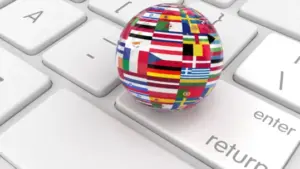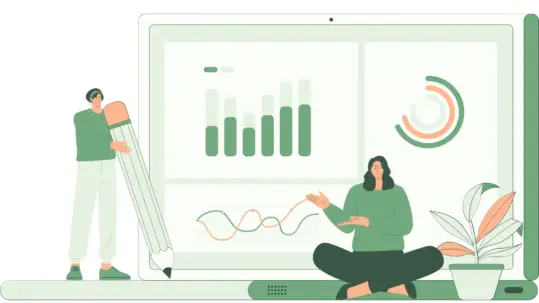
03 Mar Patent translations: characteristics and challenges to consider
Accurate patent translation is essential for ensuring the respect of intellectual property and protecting against competitors and imitations. But what makes patent translations unique, and what aspects must be kept in mind when working on a patent translation?
You may have heard of patents: a complex term at first glance, which may bring to mind long court battles to establish the ‘authorship’ of a successful new invention. Indeed, a patent is an extremely important legal title, which in many cases can make the difference between a company’s success and failure.
As a result, patent translations are just as crucial: in fact, a translation error in a patent could open the door to legal disputes and cause huge economic losses.
In recent weeks we have extensively discussed legal translation. Today we will specifically address the topic of patent translations, an extremely technical type of translation which, like legalised translations, requires various fundamental skills and knowledge.
What is a patent?
Before diving into the subject of patent translations, let’s make sure we fully understand the characteristics of this text to be translated. In other words, what is a patent?
In general, we can define a patent as a legal document that grants the owner the exclusive right to produce, sell or use a specific invention for a specific period of time.
Very concretely, a patent allows an inventor to secure ownership of their idea, so as to protect against imitations, copies and competitors.
Through the granting of a patent, the inventor can effectively exclude any other person from marketing the invention for a period of 20 to 25 years.
A patent is traditionally granted by the patent office of the country in which the inventor applies, after an examination of the invention and its compliance with statutory requirements. Once the patent is granted, the inventor must pay an annual fee to keep it in force.
The patent is therefore an important tool for protecting intellectual property that allows inventors to commercialise their inventions without the risk of others taking advantage of them. This also encourages innovation and research, as inventors are incentivised to invest time and resources in developing new technologies and products.
 It is also important to note that a patent is generally valid only at the national level. Therefore, if an Italian inventor wanted to see the authorship of his idea recognised in another state as well, he would have to file a new application with the patent office of the foreign country.
It is also important to note that a patent is generally valid only at the national level. Therefore, if an Italian inventor wanted to see the authorship of his idea recognised in another state as well, he would have to file a new application with the patent office of the foreign country.
Alternatively, European inventors can file patent applications with the European Patent Office, which provides intellectual property protection in 38 European states.
You may remember some famous legal battles over patent ownership. The two giants Apple and Samsung, for example, have been battling each other in court for nearly a decade since 2011, and Samsung has since been ordered to compensate the Cupertino company over 1 billion dollars.
Possible errors in patent translations
In light of what we have outlined above, patent translations are crucial in ensuring the accuracy of a patent abroad. As mentioned, a translation error in a patent could result in serious consequences, including infringement of the owner’s intellectual property right and loss of business opportunities for the company.
But what are some mistakes that could be made in a patent translation?
- Interpretation errors: translation of patents firstly requires excellent knowledge of the applicable law and regulations, both in the country of origin and in the target country. A misinterpretation of a legal standard could lead to an inaccurate description of the invention and improper patent protection.
- Errors in understanding technical language: patent translation requires thorough knowledge of the technical language of the relevant field. A translator who does not fully understand technical terminology might translate a term inaccurately or use an unsuitable word, making the description of the invention unclear, or in the worst of cases, even incorrect.
- Formatting errors: patents have a specific structure and formatting. If the translation does not correctly follow the required format, it may cause confusion in the interpretation of the document.
The peculiarities and challenges of patent translations
In light of what we have discussed so far, it is clear that a patent translator will first and foremost have to be an expert in the field covered, otherwise they risk mistranslating the more specific parts of the patent.

Of course, a patent translator will also need to be perfectly familiar with the legal systems of the two countries so that he or she can produce a translation that meets the legal requirements.
But what, in general, are the peculiarities of patent translations?
- For starters, patents are very precise and detailed legal documents, so they must be translated accurately and consistently. Clear and precise language must be used to ensure that the meaning of the original text is faithfully conveyed.
- As we mentioned, patent translations also require in-depth knowledge of the technical field and the specific terminology used.
- A patent is a legal document that must be drawn up in accordance with the law. The translation must therefore comply with the specific legal requirements of the country where the patent is filed. It’s also important to consider any differences between the laws of the countries in which the patent was filed and those in which it is translated.
- Finally, it should not be forgotten that patent translation is a confidential practice, which requires respect for the privacy and confidentiality of the patentee’s data. Those involved in patent translations will therefore need to ensure data security during the translation process.
We at Creative Words have extensive experience in legal and patent translations, and have always worked professionally and competently. If you need a patent translation and are looking for a reliable translation agency, contact us obligation-free: we will be happy to evaluate the most suitable solution for your needs together with you.





